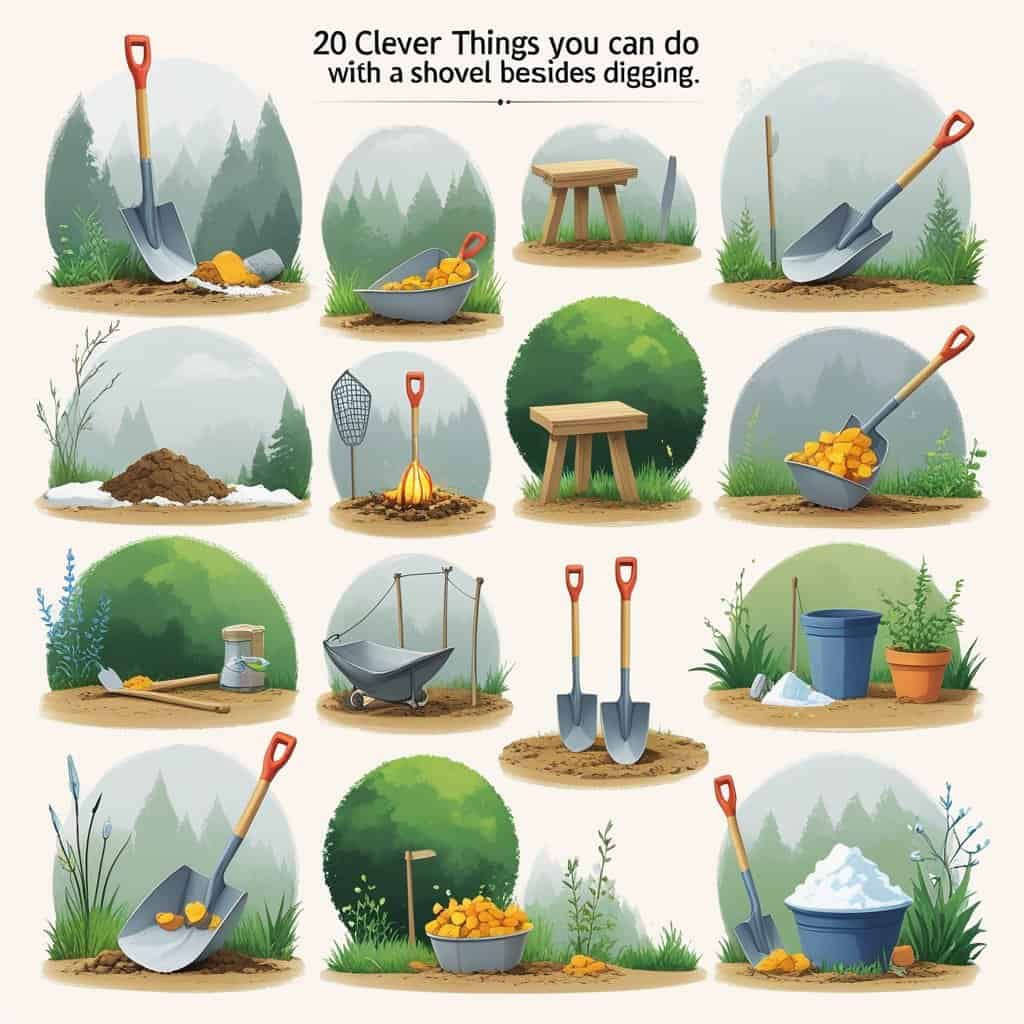Shovels for turning soil begin with a solid and durable blade that can easily penetrate the soil. The shape of the blade is also essential; a sharp, pointed blade is ideal for digging in harder soils, while a wider, flatter blade is better for turning and aerating softer soils. The shape of the blade is also essential; a sharp, pointed blade is ideal for digging in harder soils, while a wider, flatter blade is better for turning and aerating softer soils.
Table of Contents
Factors to Consider
Shovel Type
The type of shovels for turning soil that you choose will depend on the type of soil you are working with. If you are working with loose soil, a flat-edged shovel is best. If you are working with heavy soil, a round-pointed shovel is better. A round-pointed shovel is recommended for turning soil as it can penetrate it more easily.
Handle Material
The handle material is another crucial factor when choosing your shovels for turning soil. Handles can be made from wood, fibreglass, or metal. Wood handles are traditional and comfortable to grip but can break easily. Fibreglass handles are durable and lightweight, but they can be more expensive. Metal handles are strong and durable but can be heavy and uncomfortable to grip for long periods.
Blade Material
The blade material is also important. The blades for shovels turning soil can be made from steel, stainless steel, or aluminum. Steel blades are strong and durable, but they can rust easily. Stainless steel blades are rust resistant and durable but can be more expensive. Aluminum blades are lightweight and rust resistant but less strong than steel or stainless steel blades.
Blade Size and Shape
The size and shape of the blade will depend on the size of the area you are working with. A larger blade will allow you to turn more soil at once, but it may be heavier. A smaller blade will be lighter but take longer to turn the soil over. The shape of the blade is also essential. A round-pointed blade is best for turning soil, while a flat-edged blade is better for scooping and edging.
Considering the factors above, weighing each option’s pros and cons is crucial. For example, a wooden handle may be comfortable to grip, but it may break easily. Stainless steel blades are rust-resistant but can be more expensive than other options. Consider your budget, the type of soil you will work with, and how often you will use the shovel before deciding.
For more information on digging in clay, you can check our guide Shovels For Digging Clay.
After researching and analyzing the best shovels for turning soil, we have come to a few conclusions. First, it is vital to consider the type of soil you will be working with. For example, clay soil requires a shovel with a sharp, curved blade, such as a round-point shovel. On the other hand, soft or previously turned soil can be handled with a light-duty planting shovel.
Second, it is important to consider the size and weight of the shovel. A heavier shovel may be more durable, but it can also be more challenging to handle for extended periods. Conversely, a smaller shovel may be more maneuverable, but it may not be able to handle larger jobs.
Shovels For Turning Soil Pros & Cons
| Shovel Type | Pro | Con |
| Round point shovel | Sharp, curved blade for penetrating clay soil. | Not suitable for soft or previously turned soil. |
| Planting shovel | Lightweight and maneuverable. | Not suitable for large jobs or more problematic soil. |
| Garden spade | Carries more soil on the blade for turning topsoil. | Heavier and less maneuverable. |
Our Recommendations of Shovels for Turning Soil
Fiskars is an excellent option for turning soil due to its sharp and sturdy blade. Its pointed tip allows easy penetration into the ground, making it perfect for breaking up hard soil. Additionally, its long handle provides leverage for deeper digging, reducing the strain on your back.
One of the main drawbacks is that its blade can become dull over time, making it less effective for turning soil. However, this can be easily remedied by sharpening the blade periodically.
The Dikuyeel is another great option for turning soil, with a wide blade that can cover a larger surface area. Its flat edge is perfect for slicing through the ground, making it easier to turn and mix. Additionally, its ergonomic handle provides a comfortable grip, reducing strain on your hands and wrists.
One potential drawback of is that its wide blade can make it more challenging to use in tight spaces, such as between plants and hard compact soil. However, its effectiveness in turning soil outweighs this minor inconvenience.
The Truper shovel is a heavy-duty option for turning soil, with a durable blade that can withstand harsh soil conditions. Its curved blade is perfect for scooping and turning soil, making it easier to mix in compost and other organic matter. Additionally, its fibreglass handle provides a comfortable grip.
One potential drawback of is its weight, which can make it more difficult to use for extended periods of time. However, its effectiveness in turning soil makes it a worthwhile investment.
Final Thoughts
The best shovel for turning soil will depend on your specific needs and the soil type you will work with. Consider the pros and cons of each shovel before purchasing it to ensure that you get the right tool for the job.









